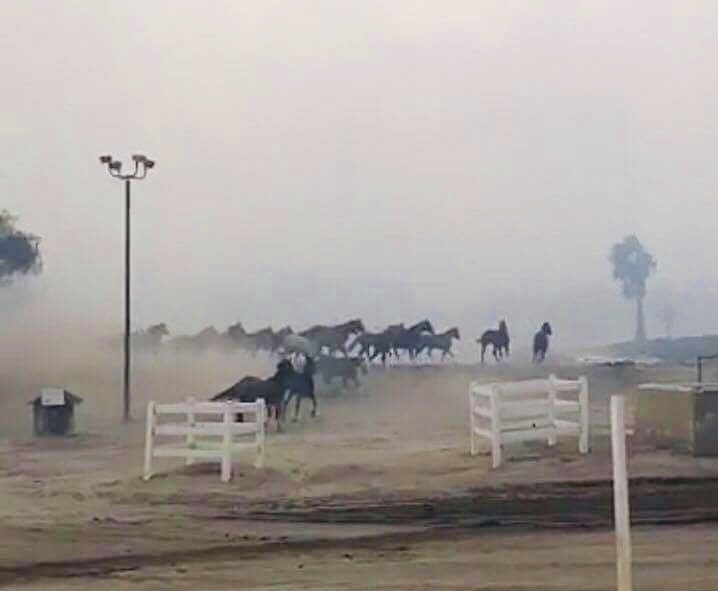Natural Disasters: Are You and Your Horse Ready for Emergency Evacuation?
Being from California and living within 100 miles of the recent devastating Camp Fire, this subject is something that I take very seriously and hold so dear to my heart. I have been in animal health pharmaceuticals as an equine specialist for over a decade and an equestrian my whole life. Natural disasters come in various forms, such as wild fires, hurricanes, tornadoes, extreme weather, earthquakes, and even volcanic activity. No matter what the disaster, people AND animals are affected. Large animals require specialized transportation and holding facilities, which can be difficult or even impossible during a sudden disaster. It is IMPERATIVE that as a horse owner, that you are prepared for an emergency evacuation.
Natural Disaster – Have A Plan Set In Place
1. Identification – It is critical to have proper identification in place. This would include vital information about your horse, from its name and breed to microchip number; any medical conditions and distinguishing characteristics are also great to have written down. This emergency Horse Identification Form is a great resource to have filled out, ready, and a copy sent to at least two people.
In a pinch, here are some other great ideas for identification in a natural disaster: spray paint your name and phone number on your horse; or use a luggage tag on haulers with your name and two forms of contact (e-mail/telephone). Keep in mind, plastic will melt in a fire, so I recommend a metal tag.
2. Transportation – Do you have your own horse trailer? If so, is it serviced and in good working condition? If not, have a list of at least 5 people who do have a trailer and are within close proximity to you to help. Does your horse load and unload into a trailer? It is VERY important that your horse will load into a trailer! A stressful situation, such as a natural disaster, will only make any loading issues worse.
If your horse will not load, they may be left behind to fend for themselves during a natural disaster. Make sure to have a back-up plan if you are unable to get your horse out. Where is your horse safest? In the barn? In a field? Loose? If they MUST be left, make sure they have a few days of food and water.
3. Evacuation Sites / Exit Plan – Know where your evacuation sites are in your area in case of a natural disaster. Make arrangements with other horse owners that you know in case of an emergency. Contact your local Animal Control agency for shelters in your area. Have at least two exit routes and a preferred destination. Make sure that you communicate your exit strategies with your neighbors. Practice your plan and think of all possible road blocks.
4. Supplies – Make sure that you have a kit with supplies you may need in a disaster set aside and used only during a disaster. Make sure it is easily accessible, and a bright color so that it can be easily found. Here is a detailed equine emergency supply list of things that you could possibly need for your horse in the case of a natural disaster.
Natural Disaster – Evacuate sooner rather than later!
Oftentimes, we do not have much notice in disasters to get your horses out safely. In times that we do, it is important to evacuate sooner rather than later. Evacuate before there is an official evacuation order. This will allow you the time to get them all out safely and available to help other horse owners. You can also check the closest School of Veterinary Medicine for Animals In Natural Disaster Training Courses.
Do you feel more prepared if a natural disaster hits your area?
I truly hope that you never have to experience a natural disaster! However, I hope that I was able to give you some resources to help you be prepared for a disaster and get your horses out safely. If you have some tips to help our community, please comment in the section below. One horse’s life can depend on it…
SHARE ON FACEBOOK
